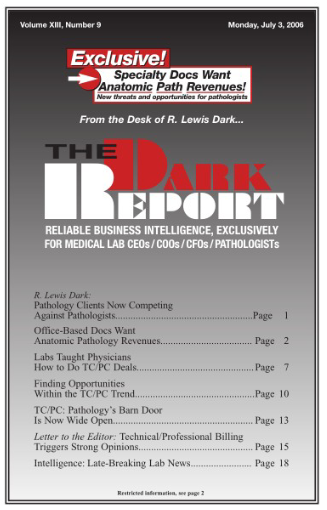CEO SUMMARY: As many pathology groups discover that their best urology and gastroenterology clients are taking serious steps to do their own anatomic pathology, they ask a basic question: How did their best-referring clients suddenly become motivated to get into the pathology business? The answer is simple: in recent years, other labs have taught specialist docs that …
Labs Taught Physicians How to Do TC/PC Deals Read More »
To access this post, you must purchase The Dark Report.


